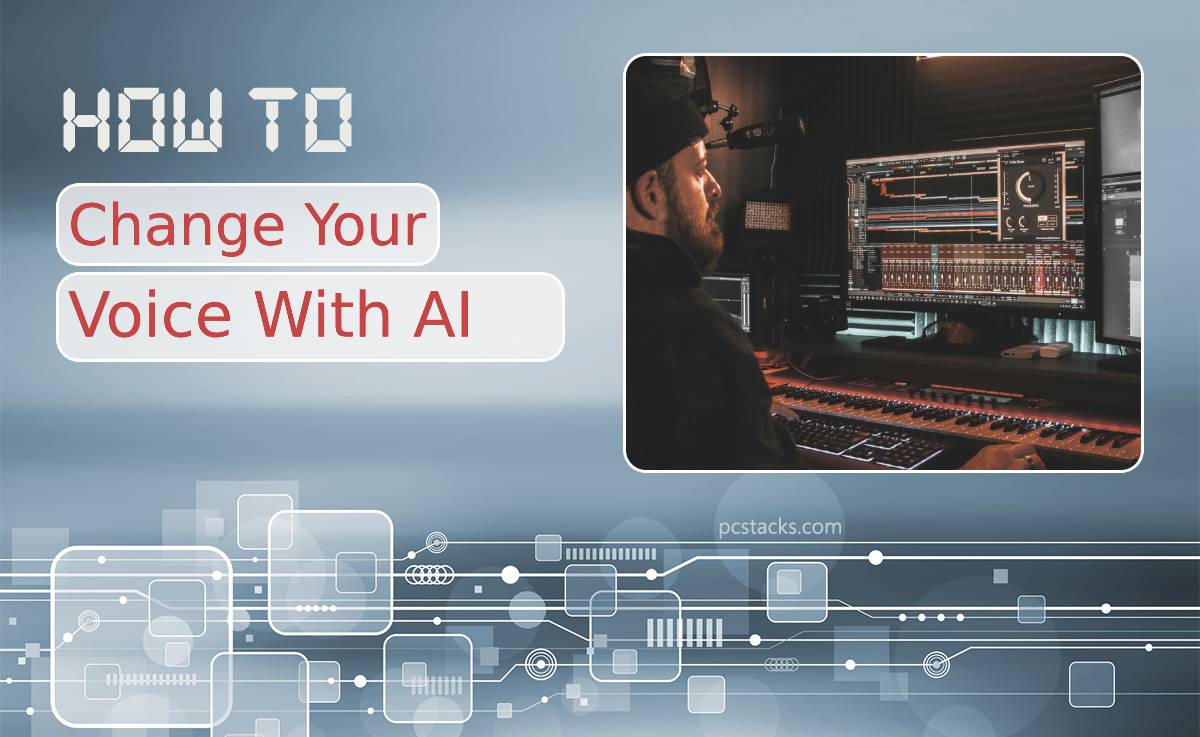Have you ever imagined being able to transform your voice at will? Thanks to the advancements in artificial intelligence technology, that dream is now within reach. Imagine speaking in the deep, velvety tones of a radio announcer one moment and effortlessly switching to a playful cartoon character voice the next. The possibilities are as endless as they are intriguing. In this article, we delve into the exciting world of AI-powered voice modulation and explore how you can change your voice with just a few clicks. Get ready to unlock a whole new realm of vocal creativity and expression!
Table of Contents
Understanding Voice Modulation: Basics of changing voice with AI
Voice modulation through AI technology has revolutionized the way we interact with audio content. By understanding the basics of changing voice with AI, users can unlock a plethora of creative possibilities. From adjusting pitch and tone to adding effects like reverb or echo, AI tools offer a versatile toolkit for altering voices in various ways.
One interesting aspect is the ability to mimic different accents and languages accurately, providing a seamless experience for global audiences. Furthermore, AI voice modulation can be utilized in entertainment industries like podcasting and gaming to enhance storytelling and create unique character voices. As this technology continues to evolve, the potential applications for voice modulation with AI are only limited by our imagination.

Choosing the Right AI Tool: Factors to consider
When it comes to selecting the right AI tool for changing your voice, there are several crucial factors to consider. The first is the level of customization and flexibility offered by the tool. It’s important to choose a tool that allows you to adjust various parameters such as pitch, tone, and speed to suit your specific needs. Additionally, considering the user interface and ease of use is essential. A user-friendly tool with intuitive controls can make the voice-changing process seamless and enjoyable.
Another key factor to keep in mind is the compatibility of the AI tool with different devices and platforms. Ensure that the tool you choose works well on your preferred operating system or software environment for a hassle-free experience. Moreover, assessing the accuracy and quality of voice transformation produced by the AI tool is crucial for achieving convincing results. Look for tools that offer realistic voice modulation capabilities and high-quality audio output to enhance your overall experience in voice modification endeavors.
Training Your Voice Model: Steps for customization
Training your voice model for customization involves several key steps to ensure optimal results. Begin by gathering a diverse dataset of your voice recordings to provide the model with ample variations and nuances. Next, carefully preprocess the data to remove any background noise or distortions that could affect the training process. Utilize state-of-the-art algorithms such as deep learning neural networks to train your voice model, allowing it to comprehend and adapt to different tones and inflections accurately.
Moreover, incorporating transfer learning techniques can expedite the customization process by leveraging pre-trained models and fine-tuning them with your specific voice data. Constantly evaluate the performance of your customized voice model through rigorous testing and validation procedures to enhance its accuracy and reliability. By following these meticulous steps for training your voice model, you can unlock a world of possibilities in changing and shaping your unique vocal characteristics with AI technology.

Testing and Adjusting: Fine-tuning the results
When it comes to changing your voice with AI, the key lies in testing and adjusting the results to fine-tune the outcome. Experimenting with different settings and parameters can greatly impact the final output, allowing you to customize your voice transformation according to your preferences. For instance, playing around with pitch, tone, and speed can offer a multitude of possibilities for achieving the desired effect.
Furthermore, constantly revisiting and adjusting your voice-changing process can lead to discovering new techniques or nuances that enhance the overall quality of the result. This iterative approach not only helps in refining your voice alteration skills but also enables you to push boundaries and explore creative avenues that may have previously been uncharted. By embracing testing and adjusting as integral parts of the voice-changing journey, you open up a world of possibilities for honing your craft and achieving truly unique outcomes.
Ethical Considerations: Impact of altered voices
Ethical considerations surrounding the impact of altered voices through AI technology are complex and multifaceted. One crucial aspect to ponder is the potential misuse of voice alteration tools for deceptive purposes, such as impersonation or fraud. This raises concerns about security and the need for stringent regulations to prevent malicious activities that could harm individuals or organizations.
Moreover, altered voices may also have profound implications in areas like journalism and entertainment. While it opens up new possibilities for creativity and expression, there is a fine line between enhancing content and manipulating information. The authenticity of voices in these industries holds significant value, prompting discussions on how AI-produced alterations could affect trust and credibility among audiences.
In essence, as we delve deeper into the realm of changing voices with AI, it becomes imperative to navigate these ethical considerations thoughtfully. Striking a balance between innovation and responsibility is key to harnessing the power of voice-altering technology in a way that benefits society while upholding principles of integrity and authenticity.

Conclusion: Embrace the possibilities of AI voice modification
As we navigate the evolving landscape of technology, it is vital to embrace the possibilities that AI voice modification can bring. The ability to alter our voice using artificial intelligence opens doors to creativity, self-expression, and even personal growth. Imagine being able to transform your tone, pitch, or accent effortlessly; this could revolutionize how we communicate in various settings.
Moreover, AI voice modification offers unique opportunities for individuals in fields such as entertainment, education, and business. It allows for enhanced storytelling capabilities, personalized learning experiences, and more engaging customer interactions. Embracing this technology not only expands our vocal horizons but also paves the way for exciting innovations that have the potential to shape the future of communication in profound ways. Let us welcome these possibilities with open arms and embark on a journey of discovery and transformation through AI voice modification.


![The Top Benefits of AI for Marketers [State of AI Data]](https://www.pcstacks.com/wp-content/uploads/2023/06/top-benefits-of-ai-for-marketers-state-of-ai-data-150x150.jpg)

